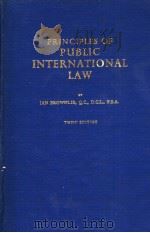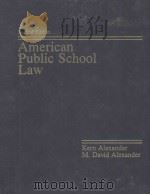《PRINCIPLES OF PUBLIC INTERNATIONAL LAW SECOND EDITION》
| 作者 | 编者 |
|---|---|
| 出版 | CAVENDISH PUBLISHING LIMITED |
| 参考页数 | 376 |
| 出版时间 | 1999(求助前请核对) 目录预览 |
| ISBN号 | 1859414613 — 求助条款 |
| PDF编号 | 812894618(仅供预览,未存储实际文件) |
| 求助格式 | 扫描PDF(若分多册发行,每次仅能受理1册) |
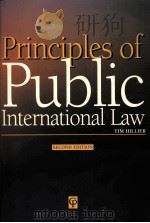
1INTRODUCTION1
1.1 HISTORICAL DEVELOPMENT1
1.2THE NATURE OF PUBLIC INTERNATIONAL LAW2
1.2.1 The traditional view3
1.2.2 The modern view4
1.2.3 Contemporary theories5
1.3 IS INTERNATIONAL LAW REALLY LAW?6
1.4THE ENFORCEMENT OF INTERNATIONAL LAW8
1.4.1 The United Nations8
1.4.2 Judicial enforcement9
1.4.3 Loss of legal rights and privileges9
1.4.4 Self-help9
SUMMARY OF CHAPTER 111
2THE SOURCES OF INTERNATIONAL LAW15
2.1 INTRODUCTION15
2.2ARTICLE 38 OF THE STATUTE OF THE INTERNATIONAL COURT OF JUSTICE16
2.2.1 Treaties17
2.3CUSTOM18
2.3.1 Definitions of international custom18
2.4THE MATERIAL ELEMENT20
2.4.1 State practice20
2.4.2 The extent of the practice23
2.4.3 The practice of dissenting states and persistent objectors24
2.4.4 Duration of practice25
2.5THE PSYCHOLOGICAL ELEMENT26
2.5.1 Treaties as evidence of customary law26
2.6GENERAL PRINCIPLES OF LAW27
2.6.1 Some examples29
2.6.2 Good faith30
2.6.3 Equity30
2.7 JUDICIAL DECISIONS31
2.8 THE TEACHINGS OF THE MOST HIGHLY QUALIFIED PUBLICISTS OF THE VARIOUS NATIONS31
2.9OTHER POSSIBLE SOURCES32
2.9.1 Resolutions of international organisations33
2.9.2 Specialised agencies of the UN36
2.9.3 Resolutions of regional organisations36
2.9.4 The International Law Commission and codification36
2.9.5 'Soft law'37
2.9.6 Jus cogens or peremptory norms38
SUMMARY OF CHAPTER 241
3THE LAW OF TREATIES43
3.1 INTRODUCTION43
3.2DEFINITIONS43
3.2.1 An expression of concurring wills44
3.2.2 Concurring wills attributable to two or more parties45
3.2.3 Subjects of international law46
3.2.4 An intention to produce legal effects47
3.2.5 Legal effects under public international law47
3.2.6 Designation47
3.3CONCLUSION AND ENTRY INTO FORCE OF TREATIES48
3.3.1 Accrediting of negotiators48
3.3.2 Negotiation and adoption49
3.3.3 Authentication,signature and exchange49
3.3.4 Effect of signature49
3.3.5 Ratification50
3.3.6 Accessions and adhesions51
3.3.7 Entry into force51
3.3.8 Registration and publication51
3.4RESERVATIONS52
3.4.1 Definitions52
3.4.2 Validity of reservations53
3.5APPLICATION OF TREATIES56
3.5.1 Non-retroactivity57
3.5.2 Territorial application57
3.5.3 Successive treaties57
3.5.4 Treaties and third parties58
3.6 AMENDMENT AND MODIFICATION58
3.7TREATY INTERPRETATION59
3.7.1 Aims and goals of interpretation59
3.7.2Section 3 of the Vienna Convention on the Law of Treaties 196960
3.7.2.1 Good faith60
3.7.2.2 Ordinary meaning60
3.7.2.3 Special meaning61
3.7.2.4 The context,object and purpose61
3.7.2.5 Supplementary means of interpretation61
3.8 MULTILINGUAL TREATIES62
3.9VALIDITY OF TREATIES62
3.9.1 Non-compliance with municipal law requirements62
3.9.2 Error63
3.9.3 Fraud and corruption63
3.9.4 Coercion63
3.9.5 Unequal treaties64
3.9.6 Jus cogens65
3.9.7 The effect of invalidity65
3.10TERMINATION OF,SUSPENSION OF AND WITHDRAWAL FROM TREATIES66
3.10.1 By consent66
3.10.2 Material breach66
3.10.3 Supervening impossibility of performance67
3.10.4 Fundamental change of circumstances67
3.10.5 Other possible grounds68
3.10.6 The effect of termination or suspension68
3.11 DISPUTE SETTLEMENT69
3.12 STATE SUCCESSION69
SUMMARY OF CHAPTER 373
4THE SUBJECTS OF INTERNATIONAL LAW AND THEIR RECOGNITION75
4.1 INTRODUCTION75
4.2INDEPENDENT STATES76
4.2.1 Population and territory76
4.2.2 Government77
4.2.3 Independence78
4.2.4Permitted derogations79
4.2.4.1 Constitutional restrictions upon freedom of action79
4.2.4.2 Treaty obligations80
4.2.4.3 The existence of foreign military bases80
4.2.4.4 Membership of international organisations81
4.2.5 Permanence81
4.2.6 Legality81
4.2.7 Self-determination81
4.2.8 States created by illegal use of force83
4.2.9 Extinction of statehood84
4.3NON-SELF-GOVERNING TERRITORIES85
4.3.1 Colonies85
4.3.2 Protectorates86
4.3.3 Mandates and trust territories87
4.4INTERNATIONAL ORGANISATIONS88
4.4.1 The extent of personality89
4.4.2 The relationship between States and international organisations91
4.5THE UNITED NATIONS91
4.5.1 Purposes and principles92
4.5.2 Membership92
4.5.3The organs of the UN93
4.5.3.1 The General Assembly93
4.5.3.2 The Security Council94
4.5.3.3 The Economic and Social Council(ECOSOC)94
4.5.3.4 The Trusteeship Council94
4.5.3.5 The Secretariat95
4.5.3.6 The International Court of Justice95
4.6 INDIVIDUALS95
4.7RECOGNITION95
4.7.1The theoretical issue96
4.7.1.1 The constitutive theory96
4.7.1.2 The declaratory theory97
4.7.2 Non-recognition98
4.7.3 Recognition of governments99
4.7.4 De facto and de jure recognition100
4.7.5 The legal effects of recognition in municipal law:UK practice100
4.7.6 Locus standi101
4.7.7 Effectiveness of legislative and executive acts102
4.7.8 Sovereign immunity104
SUMMARY OF CHAPTER 4105
5TERRITORIAL RIGHTS109
5.1 INTRODUCTION109
5.2BASIC CONCEPTS110
5.2.1 Terra nullius and res communis110
5.2.2 Intertemporal law110
5.2.3 Critical date111
5.3TITLE TO TERRITORY111
5.3.1 Occupation of terra nullius112
5.3.2 Prescription114
5.3.3 Conquest and annexation116
5.3.4 Cession117
5.3.5 Accretion118
5.3.6Other possible modes of acquisition118
5.3.6.1 Adjudication118
5.3.6.2 Disposition by joint decision118
5.3.6.3 Continuity and contiguity119
5.4 BOUNDARIES119
5.5 RIGHTS OF FOREIGN STATES OVER TERRITORY120
SUMMARY OF CHAPTER 5123
6JURISDICTION125
6.1 INTRODUCTION125
6.2 CIVIL JURISDICTION127
6.3 TERRITORIAL PRINCIPLE127
6.4PROTECTIVE OR SECURITY PRINCIPLE129
6.4.1 The effects doctrine130
6.5 NATIONALITY PRINCIPLE132
6.6 PASSIVE PERSONALITY PRINCIPLE133
6.7UNIVERSALITY PRINCIPLE135
6.7.1 International criminal jurisdiction137
6.8 DOUBLE JEOPARDY138
6.9 EXTRADITION138
6.10 ASYLUM139
6.11 ILLEGAL SEIZURE OF OFFENDERS140
6.12 THE WRONGFUL EXERCISE OF JURISDICTION141
SUMMARY OF CHAPTER 6143
7IMMUNITIES FROM NATIONAL JURISDICTION145
7.1 INTRODUCTION145
7.2STATE IMMUNITY145
7.2.1 The basis of State immunity146
7.2.2 Absolute and restrictive immunity147
7.2.3 The British position148
7.2.4 The current legal position150
7.3 FOREIGN ARMED FORCES151
7.4DIPLOMATIC IMMUNITY151
7.4.1The basis of diplomatic immunity151
7.4.1.1 Personal representation152
7.4.1.2 Extra-territoriality152
7.4.1.3 Functional necessity152
7.4.2 The international law on diplomatic relations152
7.4.3 The diplomatic mission153
7.4.4 Diplomatic personnel154
7.4.5 Diplomatic communications155
7.5 CONSULAR IMMUNITY156
7.6 INTERNATIONAL ORGANISATIONS156
SUMMARY OF CHAPTER 7159
8STATE RESPONSIBILITY161
8.1 INTRODUCTION161
8.2FAULT162
8.2.1 Objective or risk responsibility162
8.2.2 Subjective responsibility163
8.3IMPUTABILITY165
8.3.1 Organs of the state165
8.3.2 Individuals166
8.3.3 Ultra vires acts168
8.3.4 Insurrectionaries169
8.4 INTERNATIONAL CRIMES170
8.5STATE RESPONSIBILITY FOR THE TREATMENT OF ALIENS171
8.5.1 Standard of treatment171
8.6 LOCUS STANDI AND THE RIGHT TO BRING CLAIMS172
8.7NATIONALITY OF CLAIMS173
8.7.1 Individuals173
8.7.2 Corporations and their shareholders175
8.8 EXHAUSTION OF LOCAL REMEDIES176
8.9 DEFENCES AND JUSTIFICATIONS177
8.10 REMEDIES FOR INTERNATIONAL WRONGS178
SUMMARY OF CHAPTER 8181
9THE LAW OF THE SEA183
9.1 INTRODUCTION183
9.2BASELINES185
9.2.1 Straight baselines185
9.2.2 Bays187
9.2.3 River mouths188
9.2.4 Harbour works188
9.2.5 Low tide elevations188
9.2.6 Islands189
9.2.7 Reefs189
9.2.8 Archipelagos190
9.3INTERNAL WATERS191
9.3.1 Rights of access to ports and other internal waters191
9.3.2 Exercise of jurisdiction over foreign ships in internal waters192
9.3.3 Archipelagic waters192
9.4TERRITORIAL SEA192
9.4.1 The breadth of the territorial sea193
9.4.2 The right of innocent passage194
9.4.3 The right to deny and suspend passage195
9.4.4 Rights and duties of the coastal State196
9.4.5 Straits196
9.5THE EXCLUSIVE ECONOMIC ZONE(EEZ)AND THE CONTIGUOUS ZONE197
9.5.1 Rights within the EEZ198
9.5.2 Straddling stocks199
9.6THE CONTINENTAL SHELF199
9.6.1 Continental shelf rights200
9.6.2 The status of the Channel Tunnel201
9.7DELIMITATION OF MARITIME ZONES202
9.7.1 Delimitation of the continental shelf and the EEZ202
9.8HIGH SEAS204
9.8.1 Freedom of the high seas204
9.8.2Jurisdiction on the high seas205
9.8.2.1 The flagging of ships205
9.8.2.2 Collisions at sea206
9.8.2.3 Exceptions to the flag State's exclusive jurisdiction206
9.8.3 Hot pursuit208
9.8.4 Safety of shipping208
9.9INTERNATIONAL SEA BED209
9.9.1 The LOSC regime210
9.10 SETTLEMENT OF DISPUTES211
SUMMARY OF CHAPTER 9213
10AIR AND SPACE LAW215
10.1 AIRSPACE215
10.2 THE CHICAGO CONVENTION215
10.3 THE INTERNATIONAL CIVIL AVIATION ORGANISATION216
10.4 BILATERAL AGREEMENTS217
10.5 UNAUTHORISED AERIAL INTRUSION218
10.6JURISDICTION OVER AIRCRAFT219
10.6.1 Threats to aviation security219
10.6.2 Lockerbie222
10.7 THE LIABILITY OF AIRLINE COMPANIES223
10.8OUTER SPACE224
10.8.1 Definition224
10.8.2 International Conventions224
10.8.3 Geostationary orbit225
10.8.4 Telecommunication226
SUMMARY OF CHAPTER 10227
11PEACEFUL SETTLEMENT OF DISPUTES229
11.1 INTRODUCTION229
11.2 NEGOTIATION230
11.3 GOOD OFFICES231
11.4 MEDIATION231
11.5 CONCILIATION231
11.6 INQUIRY231
11.7 ARBITRATION232
11.8JUDICIAL SETTLEMENT234
11.8.1 The World Court234
11.8.2 Composition of the court234
11.8.3 Jurisdiction in contentious cases236
11.8.4Incidental jurisdiction239
11.8.4.1 Preliminary objections239
11.8.4.2 Intervention239
11.8.4.3 Interim measures240
11.8.5 Advisory opinions240
11.8.6 Law applied by the court241
11.8.7 Effect of judgment241
11.8.8 Non-appearance241
11.9 SETTLEMENT WITHIN THE UN242
SUMMARY OF CHAPTER 11243
12THE USE OF FORCE245
12.1 INTRODUCTION245
12.2 THE LAW BEFORE 1945245
12.3 THE LAW AFTER 1945:ARTICLE 2(4)OF THE UN CHARTER246
12.4 THE DEFINITION OF FORCE247
12.5THE JUSTIFICATIONS FOR THE UNILATERAL USE OF FORCE248
12.5.1 Self-defence248
12.5.2 Invitation and civil wars251
12.5.3 Protection of nationals and property abroad254
12.5.4 Humanitarian intervention256
12.5.5 Self-determination257
12.6COLLECTIVE USE OF FORCE258
12.6.1 The United Nations:a brief introduction258
12.6.2 The UN and collective use of force:the Security Council259
12.6.3Enforcement action under Chapter Ⅶ261
12.6.3.1 Korea 1950261
12.6.3.2 Rhodesia 1965262
12.6.3.3 Iraq 1990262
12.6.3.4 Somalia,Bosnia and Haiti263
12.6.4 Peace keeping actions264
12.6.5 The General Assembly's role264
12.6.6 Regional organisations265
SUMMARY OF CHAPTER 12267
13THE REGULATION OF ARMED CONFLICT269
13.1 INTRODUCTION269
13.2 THE SOURCES OF THE LAW OF ARMED CONFLICT270
13.3 APPLICATION OF THE LAW:INTERNATIONAL AND NON-INTERNATIONAL ARMED CONFLICTS270
13.4 EFFECT OF OUTBREAKS OF WAR AND ARMED CONFLICTS272
13.5RULES ON BELLIGERENCE272
13.5.1 Restrictions on weapons272
13.5.2 Conventional weapons273
13.5.3 Weapons of mass destruction274
13.5.4 Biological and chemical weapons275
13.5.5 Environmental weapons276
13.5.6 Restrictions on methods of warfare277
13.5.7Prohibited methods of warfare279
13.5.7.1 No quarter279
13.5.7.2 Starvation279
13.5.7.3 Belligerent reprisals279
13.5.7.4 Perfidy279
13.6HUMANITARIAN RULES280
13.6.1 Treatment of civilians280
13.6.2Specially protected groups280
13.6.2.1 Wounded,sick and shipwrecked281
13.6.2.2 Women281
13.6.2.3 Children under 15281
13.6.2.4 Journalists281
13.6.2.5 Civil defence,medical and religious personnel281
13.6.2.6 Prisoners of war(POWs)281
13.6.2.7 Those living in occupied territories282
13.7RESPONSIBILITY AND ENFORCEMENT282
13.7.1 Events in former Yugoslavia and Rwanda285
SUMMARY OF CHAPTER 13287
14HUMAN RIGHTS289
14.1 INTRODUCTION389
14.2THE SOURCES OF THE LAW290
14.2.1 General international agreements290
14.2.2 Specialised international agreements292
14.2.3Regional agreements293
14.2.3.1 European agreements293
14.2.3.2 Other regional agreements294
14.2.4 Customary rules295
14.3THIRD GENERATION HUMAN RIGHTS296
14.3.1 The right to self determination297
14.4ENFORCEMENT299
14.4.1 UN mechanisms299
14.4.2 European mechanisms301
SUMMARY OF CHAPTER 14303
15ECONOMIC RELATIONS305
15.1 INTRODUCTION305
15.2 THE SOURCES OF INTERNATIONAL ECONOMIC LAW307
15.3FREE TRADE AND THE WORLD TRADE ORGANISATION307
15.3.1 Commitment to most-favoured-nation trade309
15.3.2 Reduction of tariff barriers310
15.3.3 Non-discrimination310
15.3.4 Import quotas310
15.3.5 Anti-dumping311
15.3.6 Export subsidies311
15.4FINANCIAL STABILITY312
15.4.1 The International Monetary Fund312
15.4.2 The International Bank for Reconstructing and Development313
15.5 DEVELOPMENT314
15.6 EXPROPRIATION OF FOREIGN OWNED PROPERTY315
SUMMARY OF CHAPTER 15319
16ENVIRONMENTAL PROTECTION321
16.1 INTRODUCTION321
16.2 THE NATURE OF THE OBLIGATIONS321
16.3 SOURCES322
16.4 THE STOCKHOLM CONFERENCE323
16.5 THE ENVIRONMENT AND DEVELOPMENT323
16.6 THE 1992 EARTH SUMMIT325
16.7GENERAL PRINCIPLES326
16.7.1 The duty to prevent,reduce and control environmental harm326
16.7.2 Consultation,co-oporation and communication327
16.7.3 The polluter pays principle327
16.8POLLUTION328
16.8.1 Marine pollution329
16.8.2 Atmospheric pollution330
16.8.3 Nuclear energy331
16.9CONSERVATION OF NATURAL RESOURCES332
16.9.1 Sustainable development332
16.9.2 Conservation of migratory and land based species333
16.9.3 Conservation of marine resources333
16.9.4 Antarctica334
16.10 A RIGHT TO A DECENT ENVIRONMENT334
SUMMARY OF CHAPTER 16337
17THE RELATIONSHIP BETWEEN MUNICIPAL LAW AND INTERNATIONAL LAW339
17.1 INTRODUCTION339
17.2THE THEORETICAL ISSUE339
17.2.1 Monism339
17.2.2 Dualism340
17.2.3 A third way?340
17.3THE PRACTICAL ISSUE341
17.3.1 Municipal law before international tribunals342
17.3.2 International law before municipal tribunals:transformation and incorporation343
17.3.3 Customary international law and British practice343
17.3.4 Treaties and British practice346
17.3.5 The practice of other States348
17.3.6 The relationship between international law and European law349
17.3.7 The relationship between regional international law and universal international law350
SUMMARY OF CHAPTER 17351
Further Reading353
Index361
1999《PRINCIPLES OF PUBLIC INTERNATIONAL LAW SECOND EDITION》由于是年代较久的资料都绝版了,几乎不可能购买到实物。如果大家为了学习确实需要,可向博主求助其电子版PDF文件(由 1999 CAVENDISH PUBLISHING LIMITED 出版的版本) 。对合法合规的求助,我会当即受理并将下载地址发送给你。
高度相关资料
-

- A HANDBOOK OF PUBLIC INTERNATIONAL LAW TENTH EDITION
- 1927 MACMILLAN AND CO.
-
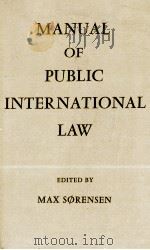
- MANUAL OF PUBLIC INTERNATIONAL LAW
- 1968 THE MACMILLAN PRESS LTD
-

- ENCYCLOPEDIA OF PUBLIC INTERNATIONAL LAW 10
- 1987 NORTH-HOLLAND
-
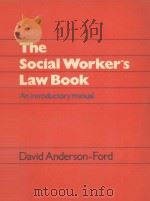
- THE SOCIAL WORKER'S LAW BOOK AN INTRODUCTORY MANUAL
- 1980 MCGRAW-HILL BOOK COMPANY(UK)LIMITED
-

- CROSS ON PRINCIPLES OF LOCAL GOVERNMENT LAW SECOND EDITION
- 1997 SWEET & MAXWELL
-
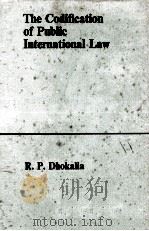
- THE CODIFICATION OF PUBLIC INTERNATIONAL LAW
- 1970 MANCHESTER UNIVERSITY PRESS
-
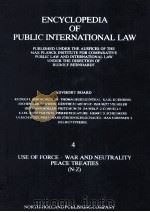
- ENCYCLOPEDIA OF PUBLIC INTERNATIONAL LAW 4
- 1982 NORTH-HOLLAND PUBLISHING COMPANY
-

- ENCYCLOPEDIA OF PUBLIC INTERNATIONAL LAW 3
- 1982 NORTH-HOLLAND PUBLISHING COMPANY
-
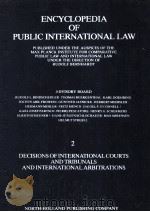
- ENCYCLOPEDIA OF PUBLIC INTERNATIONAL LAW 2
- 1981 NORTH-HOLLAND PUBLISHING COMPANY
-
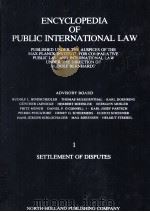
- ENCYCLOPEDIA OF PUBLIC INTERNATIONAL LAW 1
- 1981 NORTH-HOLLAND PUBLISHING COMPANY
-

- INTERNATIONAL LAW SECOND EDITION
- 1976 LONDON BUTTERWORTHS
-
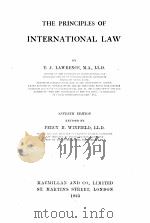
- THE PRINCIPLES OF INTERNATIONAL LAW SEVENTH EDITION
- 1923 MACMILLAN AND CO.
提示:百度云已更名为百度网盘(百度盘),天翼云盘、微盘下载地址……暂未提供。➥ PDF文字可复制化或转WORD
